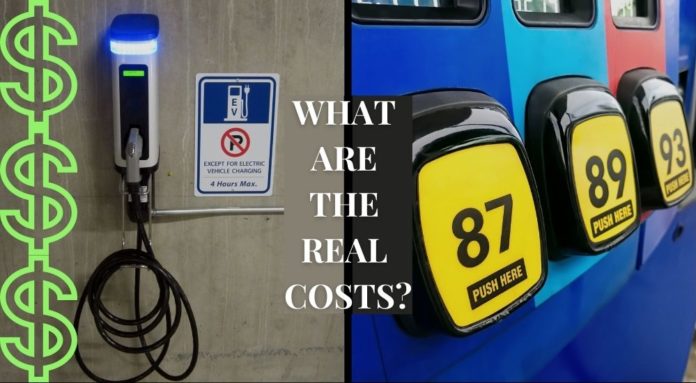The other day, after my seventh cup of coffee, second pack of cigarettes, and fourth mild bout of paranoia, I was taking my typical stroll through the Internet’s playground of news stories and reports. During this digital constitutional, I came upon something most interesting: a story by Car and Driver that was in response to a study recently published by the Anderson Economic Group (AEG), an economic consulting firm, which I assume means they’re a real benefit to all humanity. The contents of this original paper and Car and Driver’s response are both fascinating and worth considering.
AEG’s Findings
According to AEG, their goal was to compare “…the true cost of fueling EV and ICE vehicles.” In case you don’t know, EVs are Electric Vehicles, and ICE refers to an Internal Combustion Engine – so they’re setting out to see if EVs represent the kind of value they often claim to. That seems a noble enough venture to me.
In their findings, AEG’s paper states the direct cost of fueling an ICE vehicle is $8.58 per 100 miles on the low end, up to $12.60 for a luxury model. While charging an EV costs $12.95 per 100 miles and up to $15.52 for a luxury EV mostly charged commercially. In other words, charging a luxury EV model while out on the road most of the time is almost twice the price, per 100 miles, as keeping an entry ICE model fueled up – over time that difference would be huge!
Worst of all, their findings indicate that, “EVs impose considerable time burdens,” because you’re always having to worry about charging them. Time is money, after all, and your time is valuable, so the time you spend charging your vehicle is a virtual expense. Going by that logic, the time you’ve spent reading this so far has likely also been a burden, and I just cost you money. Sorry about that.
C&D Response
I could go on with AEG’s paper, but the more interesting thing, really, is how Car and Driver responded to it. For starters, C&D pointed out that in their paper, AEG offered fuel costs for an “Entry ICE” model, a “Mid-Priced ICE,” and a “Luxury ICE.” Yet, for the competition, they started with “Mid-Priced EV,” and then looked at a “Luxury EV mostly commercial charging” and a “Luxury EV mostly home charging.” There’s no “Entry EV” in there – I assume this was purely an oversight and not because AEG was attempting to manipulate the data.
Of course, this is just the beginning, as C&D found a number of other interesting issues with how the study was conducted. For starters, AEG comes up with an average of 2.5 minutes per day to keep an EV charged, which would come to about 75 minutes per month. And yet, the paper assumes that an average person will use public chargers 40% of the time – resulting in a calculation based on about 270 hours per month charging their vehicle.
They also point out that AEG decided that the time spent charging a vehicle is an implicit expense and calculated this cost based on the preceding numbers using an estimate of someone with an annual salary of $70,000 per year – significantly higher than the national average salary. I could go on with this as Car and Driver continues to point out other things that AEG did like include the cost of a Level 1 home charger, even after mentioning that one is typically provided with the purchase of an EV, or how they factored in numerous charging losses for home-charging efficiency to really boost the numbers.
Reading Between the Lines
Looking at the article from Car and Driver, one might conclude that AEG is being less than fully honest with its appraisal of the situation. I have a hard time believing this could be the case, however, since AEG’s website has a banner showcasing how they’ve worked with such fine organizations as Michigan State University, proud home of convicted sex offender and child rapist Larry Nassar; as well as Nestlé, a company that dressed sales reps in nurse’s uniforms to have them convince women in underdeveloped nations to switch from breastfeeding to buying their formula. Surely, a consulting group with ties to such organizations would never try to mislead the public.
Editor’s Note: We’ve not reached out to AEG or Car and Driver for a response to this piece as we feel they all probably have better things to do with their time. Along with MSU and Nestlé, AEG has also worked with GM, Ford, and the National Auto Dealers Association. Certainly these groups would never suggest AEG skew their data toward a particular agenda. AEG provided no information in their report about who funded this study or the paper it resulted in, so feel free to speculate. Thank you.












